Genesis GV60 review: Electric opulence
You get luxury and an amazing boost button in this premium saloon-cum-SUV
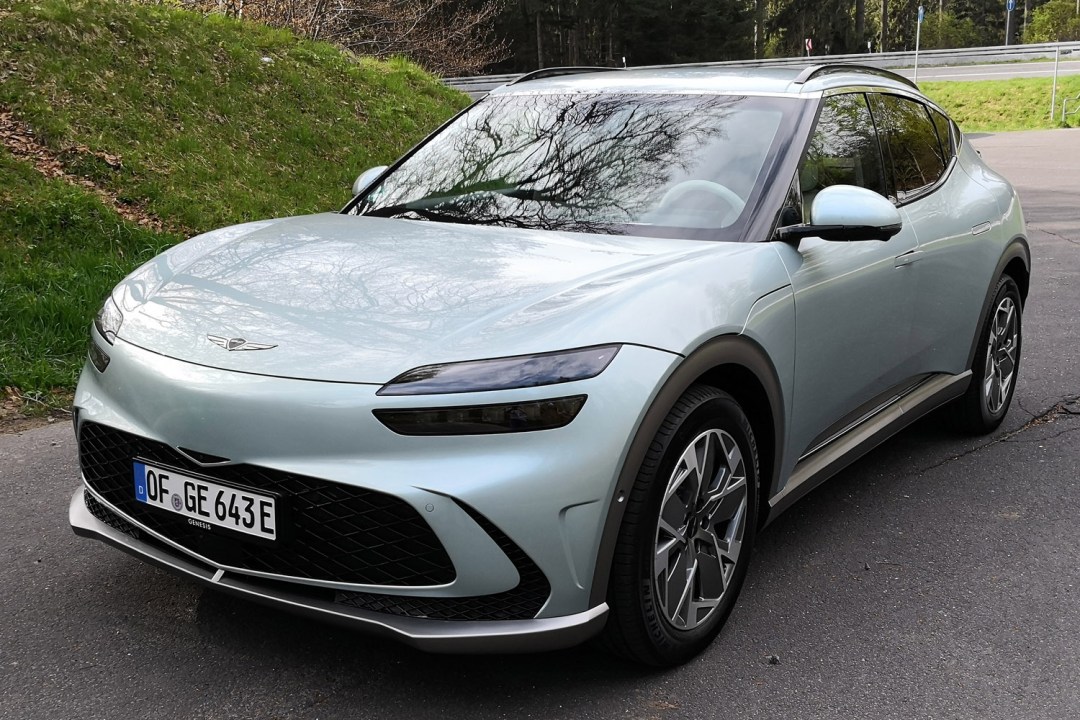
American car nuts will be familiar with Genesis, but for us Brits we’re only just getting to know Hyundai’s luxury wing. It’s a premium brand that has quickly built up a solid portfolio of models, including the G70 and G80 luxury saloons. The GV60 is its first dedicated electric car, though.
It’s based on the same E-GMP platform as the Hyundai Ioniq 5, which is already proving to be a hit with folks heading in the direction of their first EV, but a little behind the Genesis in the luxury stakes. The GV60 is a similar size to the Ionic 5, with the sort of jumbo saloon-style shape that’s deceptively bigger then you think it’s going to be, both inside and out. That’s a great thing for the sort of market the GV60 is targeted at: pretty much anyone with a family, thanks largely to the space on offer.
You can think of the GV60 as a rival to Jaguar I-Pace, with the less premium but no less good Ford Mustang Mach-E not far behind. There are three different variants, Sport Plus, Sport and the entry-level Premium, which all make use of a 77.4 kWh battery, with a mix of rear- and all-wheel drive powertrains.
The styling
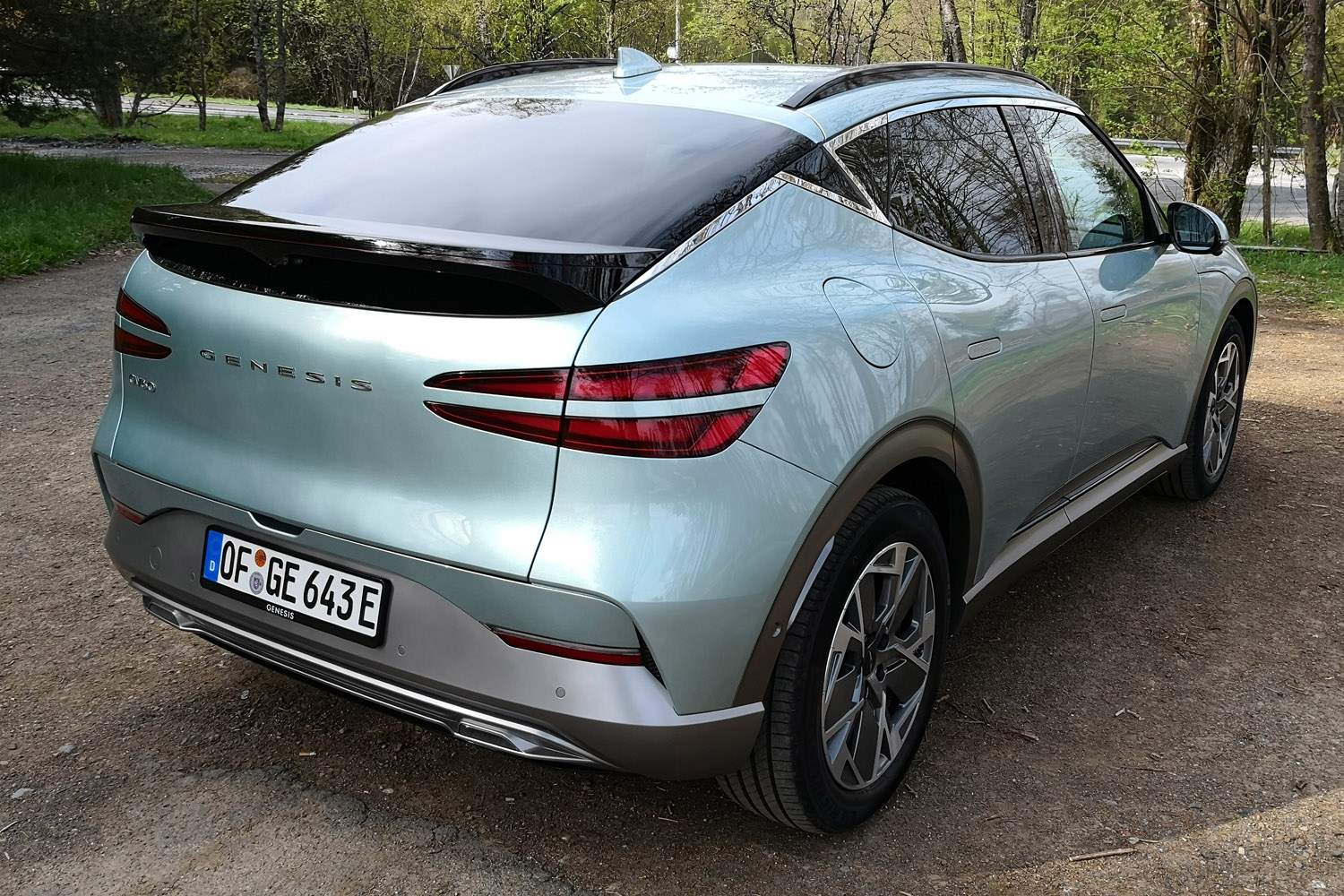
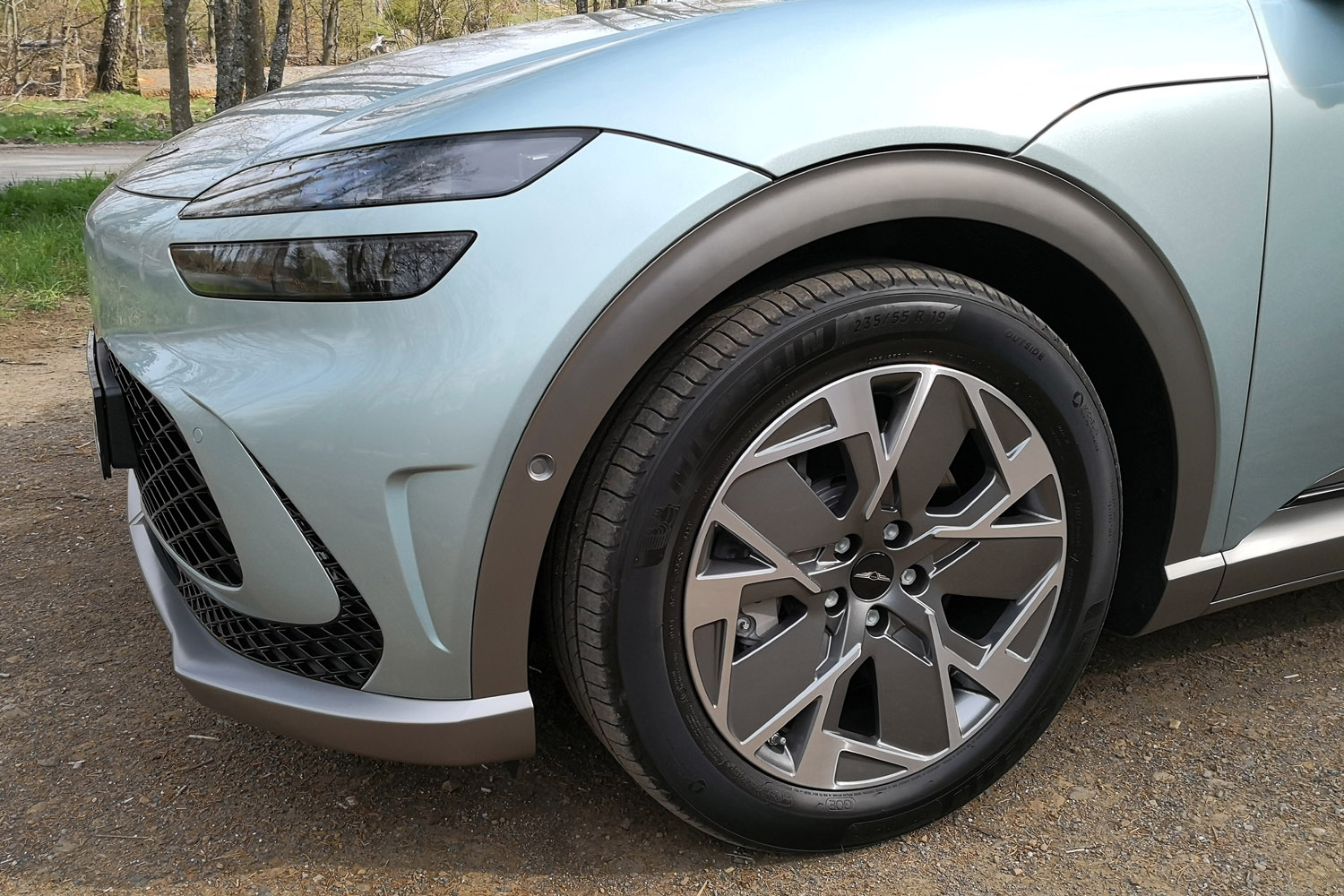
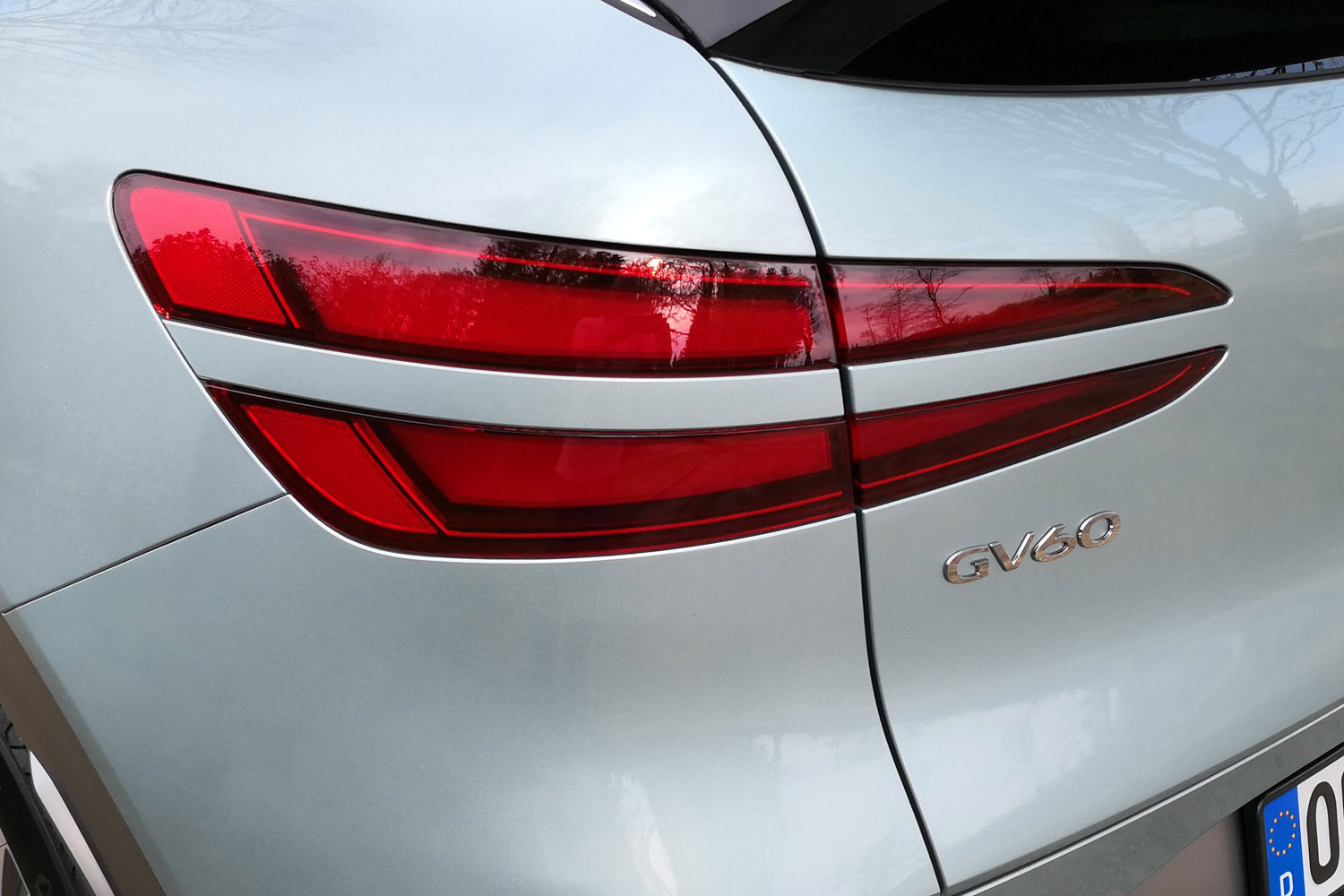
There’s a decent level of opulence across all three variants, and Genesis has done a great job in keeping the styling consistent with other cars in the portfolio. There’s the distinctive front grille, which is something of a trademark for the brand. Recessed LED headlights at the front are matched with the taillights at the back. Elsewhere, there are seductive curves, with minimal trim flourishes. Recessed door handles pop out when you want to gain access, supplementing the streamlined look.
There’s a funky selection of paint colours that help the car stand out even further – most notably the Sao Paulo Lime green shade, with the metallic blue and white interior model looking one of the best to us. We’re not sure how good that white vegan leather will look after your kids have climbed all over it, mind.
We loved the electronic cameras that can take the place of conventional door mirrors. You can have standard-issue folding ones if you prefer, but this being a Korean car the emphasis is on the tech, and the mirrors along with their screens on the inside of the front doors are a neat touch. They work well too, compared to some we’ve experienced.
The roofline slopes more dramatically than taller occupants in the back might like, but you can’t really describe the Genesis GV60 as cramped. There’s seating for five and a generous boot, along with a pretty tiny frunk under the hood. You can flip the rear seats to suit too, for squeezing in all the typical family junk. Rear window visibility is a little compromised too, but that’s addressed by the in-car driver aids and reversing camera, all of which helps to alleviate any nerves you may have from squeezing into tight parking spaces.
The drive

Driving the top-of-the-tree GV60 Sport Plus, which has twin motors and all-wheel-drive, which is good for 483bhp split between both axles, turned out to be more of an experience than expected.
The Eco, Comfort and Sport driving modes are all self-explanatory, but the real revelation comes when you hit the Boost button that sits innocently on the steering wheel. This engages a full 10-seconds of astonishing power, duly launching the GV60 down the road like lightning. It’s Tesla-fast, if that’s what you like to compare things to, with 0-60mph arriving in just 4 seconds.
The effect is limited to just the 10 seconds though, and the red dials count you down to zero just so you know where you are with the system. It’s ideal for those tense overtaking moves you have to make from time to time. Equally though, it needs to be handled with care. As does the ‘drift mode’, which is better hidden, and probably deserves to stay that way. Unless that is, you’re going to take your shiny new GV60 to a track day.
When you’re not trying to out-drag sports cars, the GV60 is an EV that sits nicely on the road and corners with plenty of confidence, despite its size and weight.
The technology

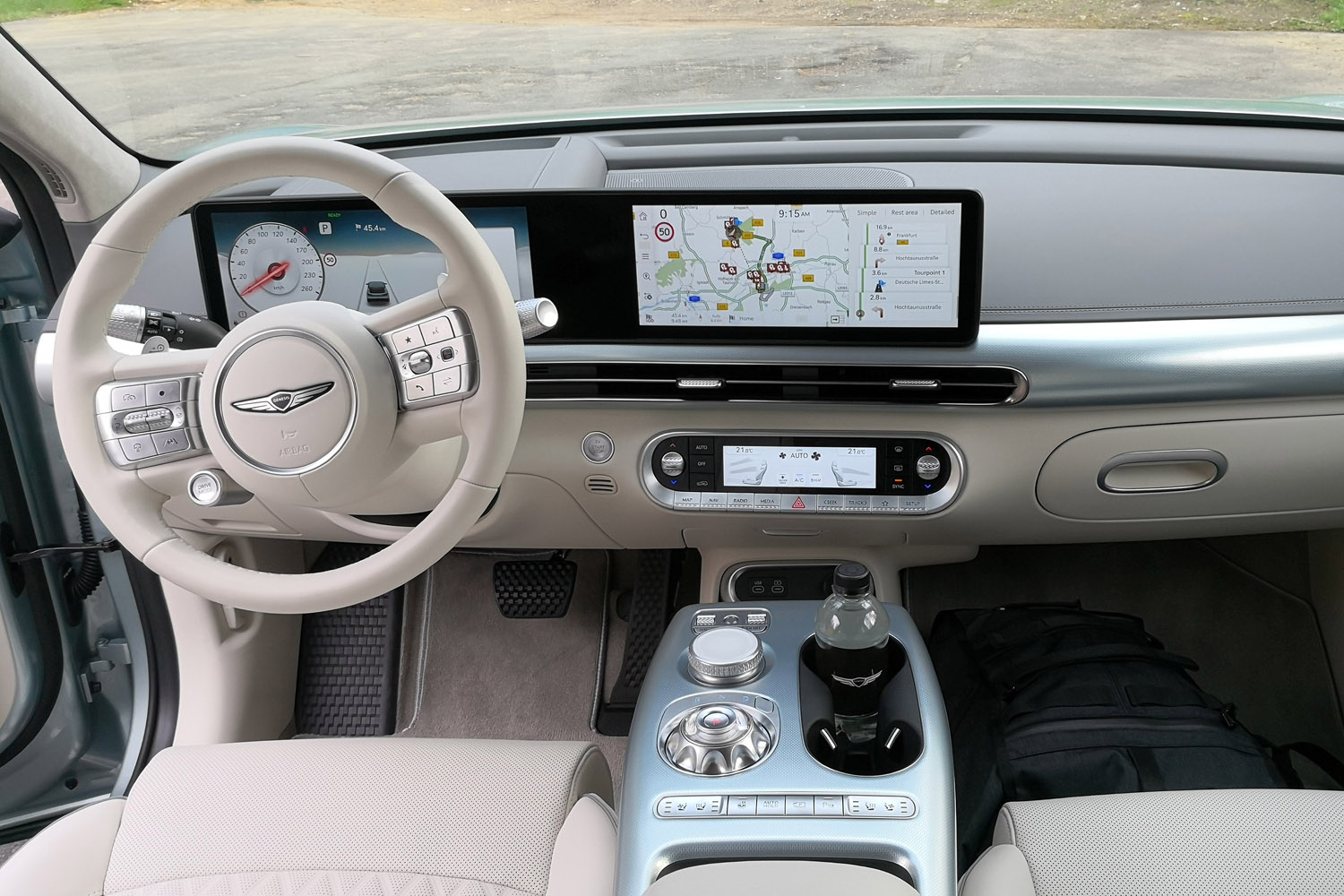
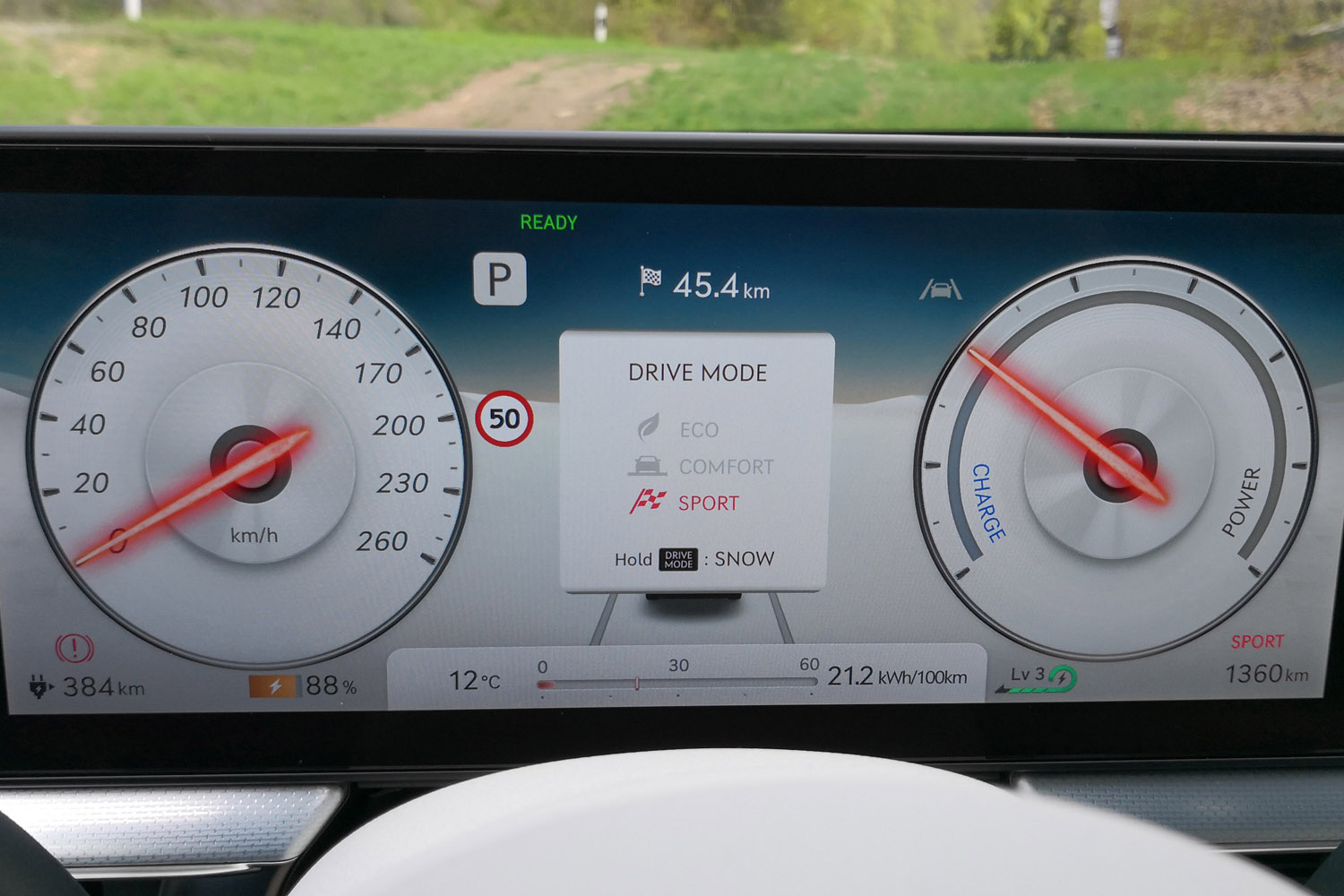
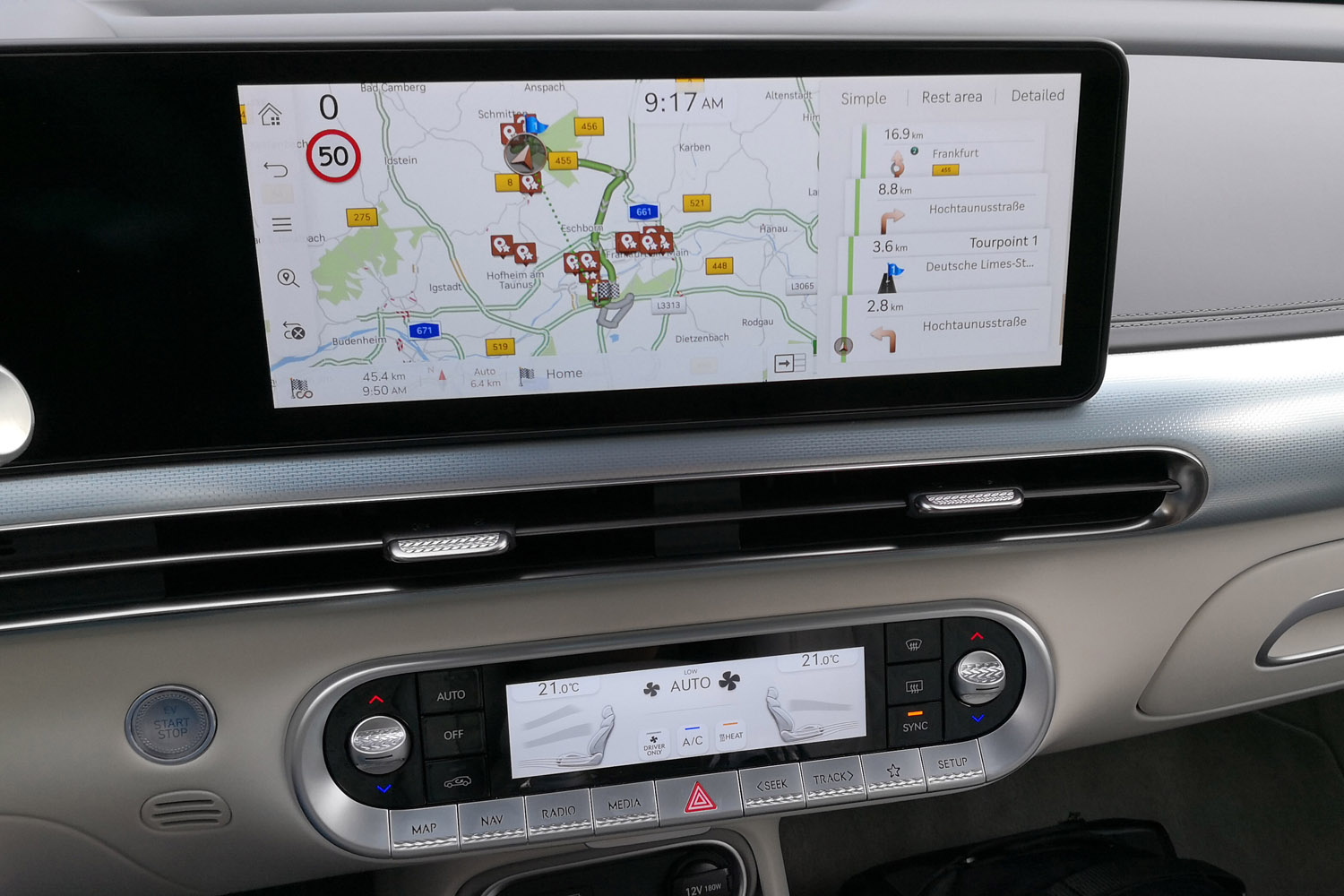
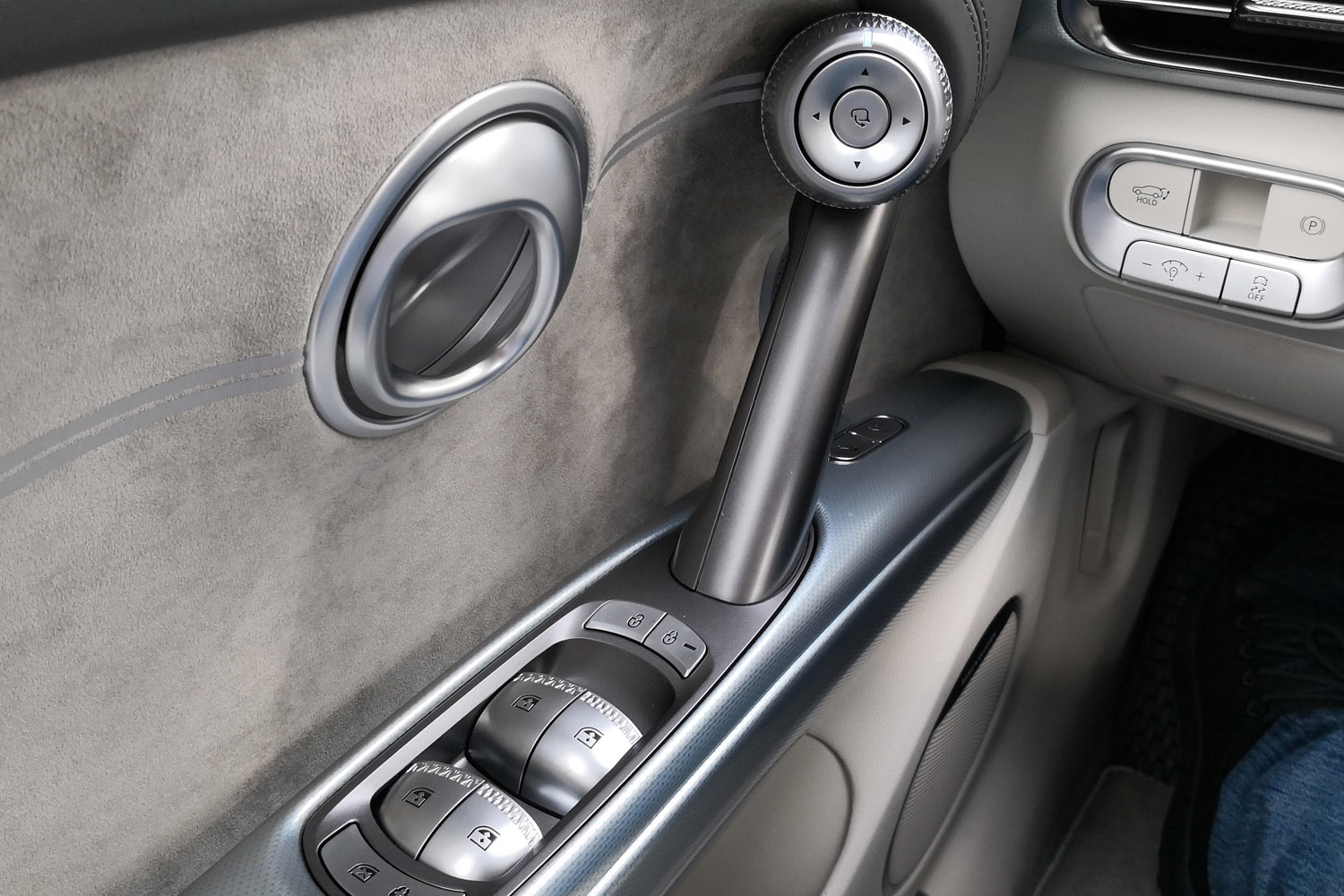
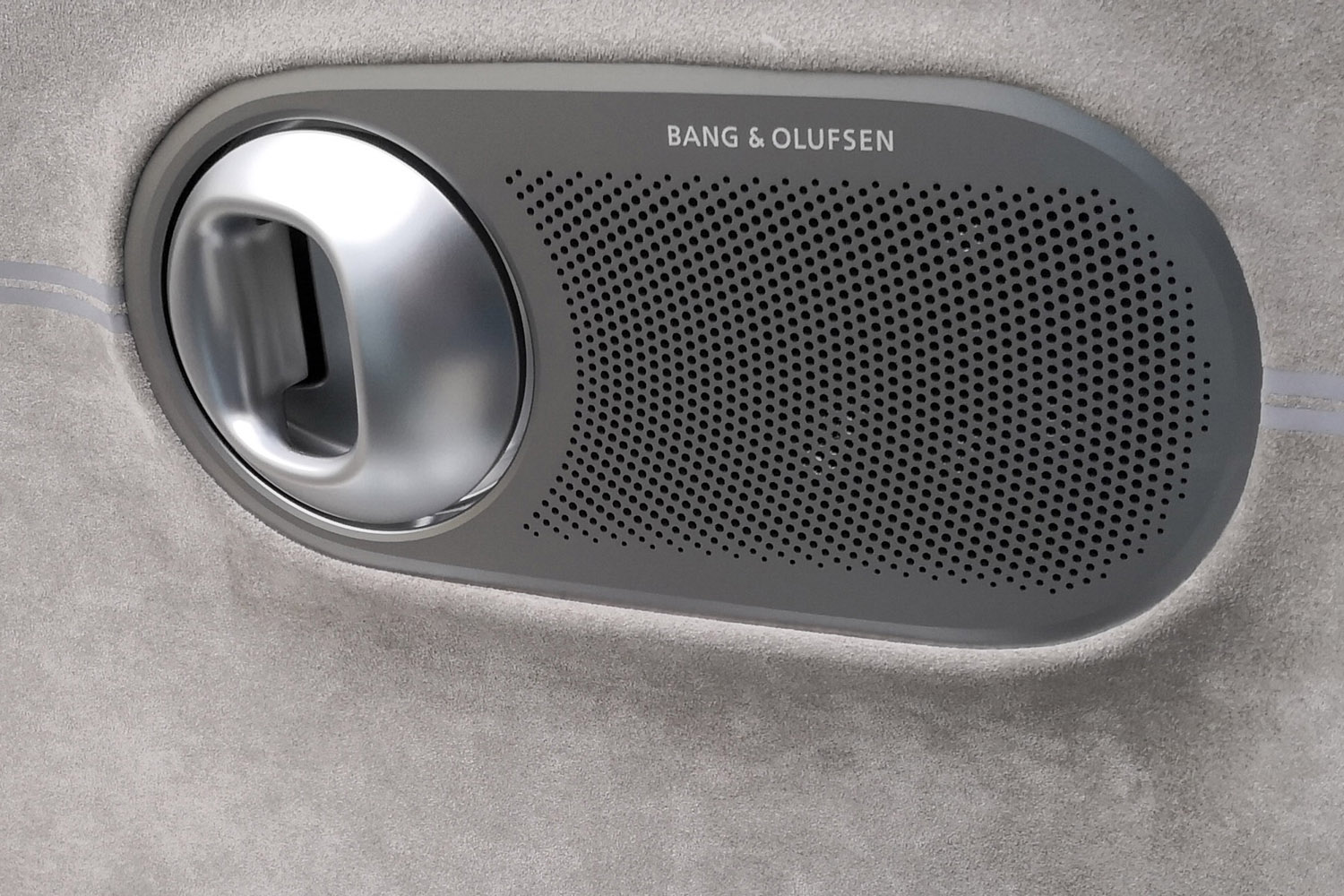
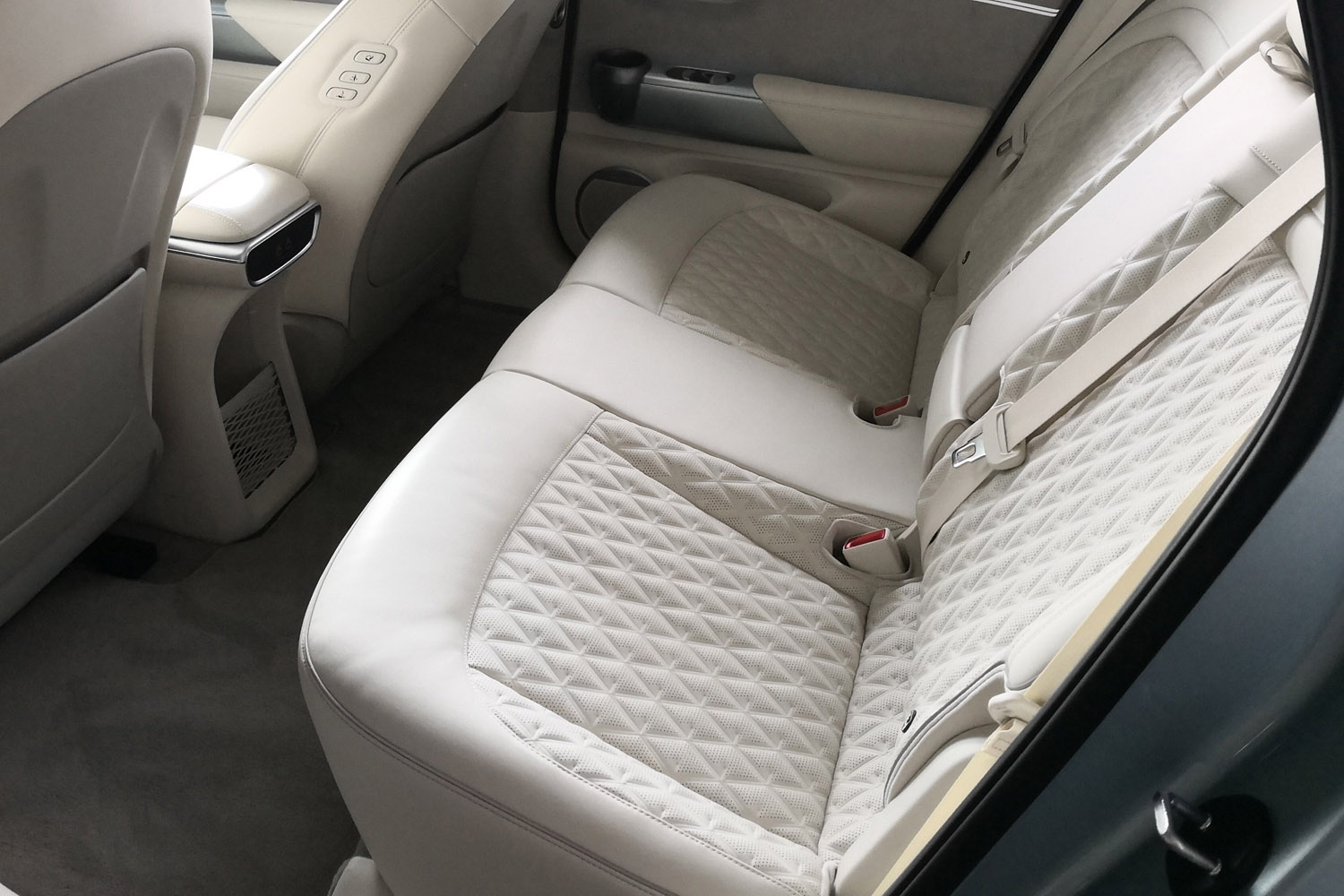
Prior to being dazzled by the Boost button, your eyes will also be automatically drawn to the crystal ball that sits in the centre console. This revolves mesmerisingly as you start the car, and allows you to select your drive mode. It’s a neat trick.
The 12.3in infotainment touchscreen throws a lot of information at you, as does the digital instrument cluster and heads-up display. All of this can be tweaked, poked and prodded in order to produce your own customised user profile.
Better still, the seats are excellent and have a multitude of adjustment options, including a massage function on the top models. Despite the wealth of tech though, there’s still a sensible level of physical dials, especially for managing the climate controls. This is one of those things that can be really handy when you’re on the go, on your own and simply want to get the temperature just right without having to fiddle with touchscreen menus. There’s a lot of smart thinking inside the Genesis GV60, with plenty of tech but an underlying sense of practicality. We love it.
Genesis GV60 verdict

The Genesis GV60 is predictably luxurious. What is less expected is the performance on tap, especially if you plump for the Sport Plus edition and that mad Boost button. Some may see it as a bit of a novelty function, but it’s certainly something everybody starts going on about after they’re tried it.
Aside from that, the Genesis GV60 is a great mix of neat design and spaciousness, topped off with generous lashings of tech. Much like the Hyundai Ioniq 5 and the Kia EV6, which also shares the same platform, you’ll want to take some time reading the manual – but uncover what’s lurking in all the menus and there’s plenty it can do.
Stuff Says…
Lots of luxury and performance that verges on the insane makes the Genesis GV60 a seductive hit.
Genesis GV60 technical details
| Motor | 2x asynchronous electric (one per axle) |
| Battery | 77.4kWh |
| Power | 483bhp |
| Torque | 516lb ft |
| 0-62mph | 4.0sec |
| Top speed | 146mph |
| Range | 289 miles |
| Charge rate | 350kWh |
| Kerb weight | 2145kg |
| Cargo volume | 432-1550l |
